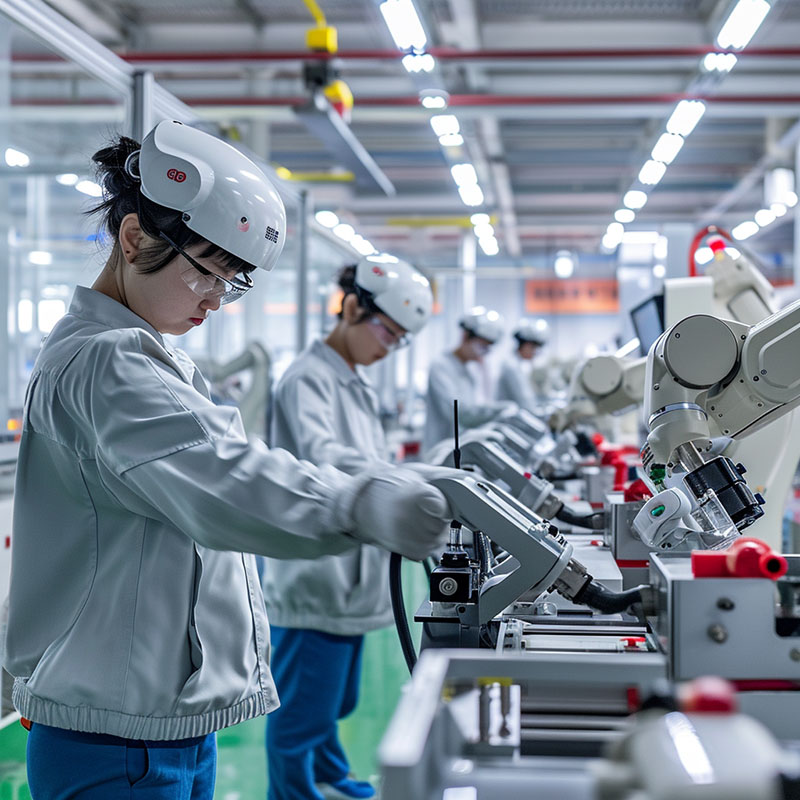
China is increasingly active in the development of global technology standards, Deloitte found in a 2004 report. The report, "Changing China," detailed how China's standards initiatives will shape global competition in the technology, media, and telecommunications for years to come.
China's current position as a consumer and producer of many technology products -- along with its healthy long-term growth prospects -- puts it in a strong position to influence standards in both its own and global markets. As China's standards become more widely accepted, Chinese firms will increasingly direct the global technology sector.
"China is able to use the lure of its massive markets and spectacular growth as leverage in the standards war. Global technology and telecommunications companies need to review China's standards initiatives and collaborate, where appropriate, with Chinese companies in standards development," says Charles Yen of Deloitte in China.
In the report, Deloitte identified three practical strategies for China to go about promoting its unique technology standards:
- Offer a lower cost substitute to a standard that already exists
- Establish a new standard in its home market, then export that standard after achieving critical mass and economies of scale
- Join an international coalition, using the appeal of its domestic market as leverage
Chinese government agencies and companies are undertaking all of the above strategies. "China's big push into standards is not without risk. Its effort will be most effective when its standards initiatives align with market forces, international standards, and the interests of multi-national coalitions," said Mr. Yen.
"Technology vendors that misjudge the impact of China's standards revolution could find themselves at a significant disadvantage, with their position in the market increasingly over-taken or encroached upon." Practically there are four strategies for technology firms to consider as China's technology standards are being shaped:
- Collaborate with standard setters
- Compete selectively, focusing on areas where standards are harder to mandate
- Innovate specifically for the Chinese market
- Seed emerging markets to encourage growth and establish early control
"Firms with a strong base of support among Chinese companies and consumers are in the best position to promote their own standards. Those lacking widespread support would be wise to co-operate instead of competing," continued Mr. Yen.
From operating systems and software applications, to storage media, wireless communications and satellite positioning, Chinese government agencies and companies are working to shape new technology standards for economic advantage. Deloitte expects Chinese manufacturers to begin by building critical mass of support at home, then exporting their technologies to emerging markets such as Southeast Asia and the Middle East.

"Technology companies must carefully monitor China's actions, assess the implications of Chinese standards, and amend their strategies accordingly," added Mr. Yen. "Companies that don't may find themselves locked out of the world's largest and fastest growing marketplace, which is increasingly defined by standards that originate in China."
The Chinese government recently announced a major commitment to Linux and announced it was drafting a new standard specifically for the Chinese market that might be made compulsory for all IT vendors and service providers.
The Chinese software industry is still in its infancy and China wants to source software or create its own software that is affordable to the masses.
China established a working group to draft and develop national standards for RFID tag technology. Some reports indicate the group is adhering to international standards, while others suggest the group is planning to go its own way. An incompatible RFID standard could pit the interests of China's emerging IT industries against the interests of major purchasers of Chinese products.
Chinese companies are trying to promote a successor to the DVD optical disk standard, called Enhanced Versatile Disc (EVD), which has better sound and picture quality than DVD.
Chinese companies are constrained by hefty DVD royalties, which range from $15 to $22 on players that today often retail for less than $60. A consortium of China's leading makers of DVD players holds the EVD patents, and collects royalties.
China is developing its own standard technology for compressing audio and video. The new standard, calls AVS, is competing with MPEG-4 and H.264 to replace the current worldwide compression standard, MPEG-2.
EVD is currently based on MPEG-2, but a switch to AVS is expected -- allowing Chinese manufacturers to produce state-of-the-art video players based entirely on Chinese technology standards.
China has its own globally approved standard for 3G and as the world's largest market for mobile communications, is well positioned to take a lead role in defining the 4G standard.
China recently chose Europe's Galileo system over the U.S. military's Global Positioning System. The push into satellite positioning systems has significant commercial and geopolitical ramifications.
Deloitte Touche Tohmatsu has considerable experience in China and has been a significant contributor to the development of China's accounting standards, taxation system, and local professional accountants.